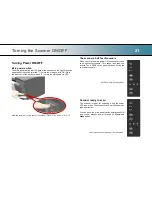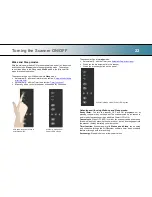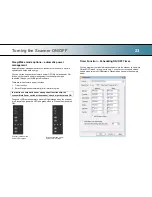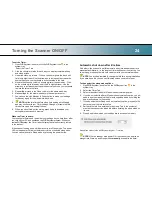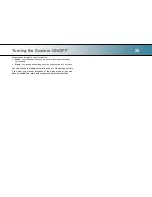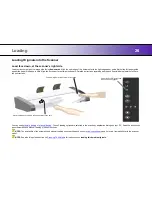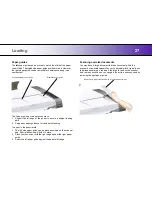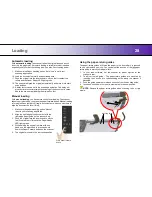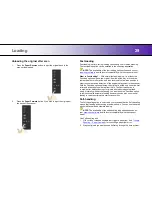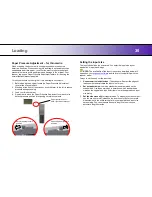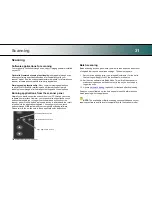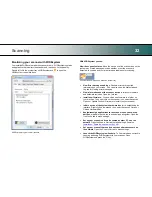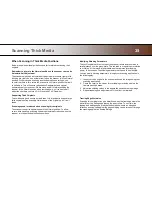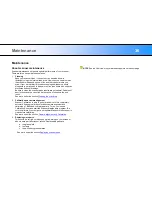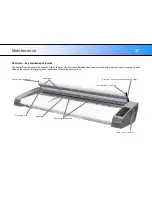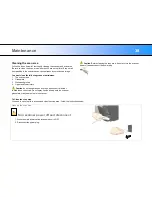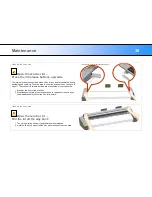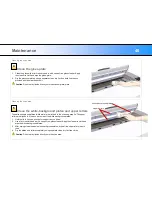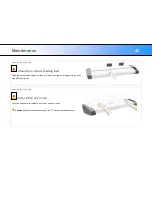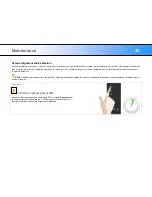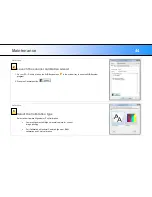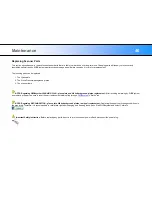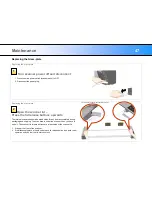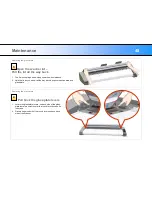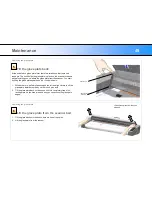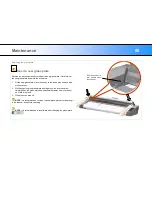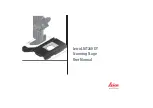
Scanning Thick Media
35
When Scanning in Thick Media Positions
Below are some additional guidelines and facts related to scanning thick
originals.
Remember to return to the
Normal
position so the scanner can run its
Automatic-Self-Adjustment
The scanner employs an automatic self-adjustment procedure (light profile,
stitching etc.) that can only activate itself when the scanner is in the
Normal
position. With prolonged scanning in extended thickness settings, you
should from time to time return the scanner to its
Normal
position to allow it
to self-adjust. This will ensure refreshed self-adjustment and optimal
performance of your scanner. Please make a habit of always setting the
scanner in the
Normal
position when shutting down, so it can auto-self-
adjust the next time you turn it ON. Press the ATAC Down-key.
Supporting Thick Originals
To avoid bending and ensure a stable scan, It is important to support large
thick originals during scanning. Hold the end of the original up as it as it
feeds.
Scanning speed is reduced when scanning thick originals
The scanner runs at its optimal speed in the
Normal
position. To allow
secure drive handling, scanning speed is automatically reduced when the
scanner is in the extended thickness positions.
Modifying Stitching Parameters
Thick stiff originals will rest on top of the scanner rollers and thus raise a
small distance over the glass-plate. This can lead to irregularities in relation
to “stitching” of the image at points between the cameras (overlapping
pixels). In such cases, the stitching parameters will need to be modified.
You can modify stitching parameters through your scanning application in
the following way:
1. Insert your thick original in the scanner and scan the image using your
scanning application.
2. Check the result in the viewer for overlapping or missing pixels in the
camera transition areas.
3.
Adjust the stitching values in the application‟s scanner setup dialogs.
4. Repeat scanning and adjustment until the effect is minimized.
Treating Edge Distortion
Scanning thick originals can give distortions when the front edge meets the
exit rollers or the trailing edge leaves the entry rollers. To omit this, the
leading and trailing edges are by default skipped when in an extended
thickness position. Leading/trailing edge skipping can be turned off through
the scanning application‟s setup dialogs.

